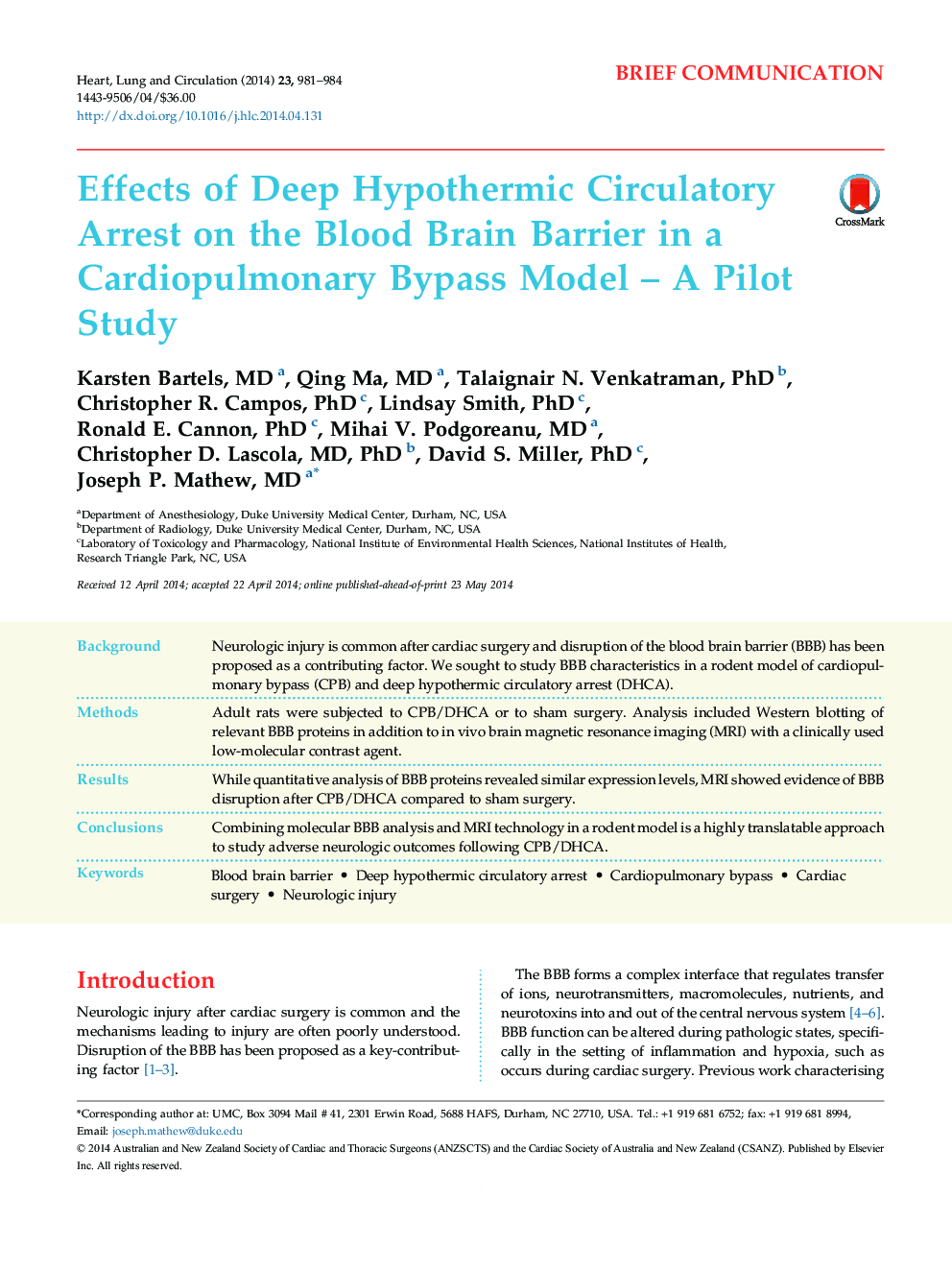| Article ID | Journal | Published Year | Pages | File Type |
|---|---|---|---|---|
| 2917791 | Heart, Lung and Circulation | 2014 | 4 Pages |
BackgroundNeurologic injury is common after cardiac surgery and disruption of the blood brain barrier (BBB) has been proposed as a contributing factor. We sought to study BBB characteristics in a rodent model of cardiopulmonary bypass (CPB) and deep hypothermic circulatory arrest (DHCA).MethodsAdult rats were subjected to CPB/DHCA or to sham surgery. Analysis included Western blotting of relevant BBB proteins in addition to in vivo brain magnetic resonance imaging (MRI) with a clinically used low-molecular contrast agent.ResultsWhile quantitative analysis of BBB proteins revealed similar expression levels, MRI showed evidence of BBB disruption after CPB/DHCA compared to sham surgery.ConclusionsCombining molecular BBB analysis and MRI technology in a rodent model is a highly translatable approach to study adverse neurologic outcomes following CPB/DHCA.
